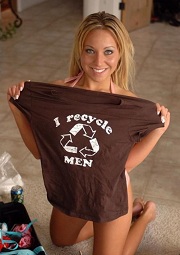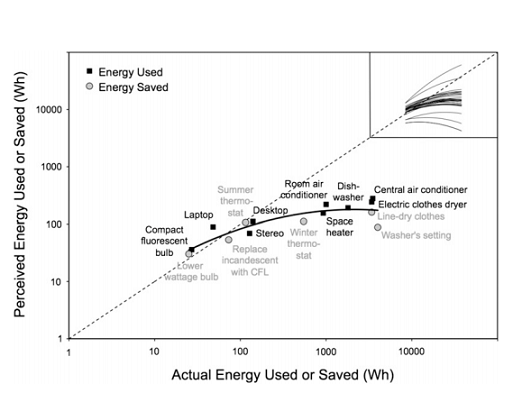September 13, 2010
How To Promote Energy Conservation

won't help
1. "A 2000 W dishwasher typically uses 2000 units of energy in one hour. How many units of energy do you think each of the following devices typically uses in one hour?"
- central air conditioner
- electric clothes dryer
- laptop computer
Repeat your answers so you don't change them later.
2. "How many units of energy would each of the following changes save?"
- Drying clothes on a line for one load (i.e. not using the dryer for one load)
- Changing washer temperature from hot wash/warm rinse to warm wash/cold rinse for one load
- In the winter, turning down the thermostat (make home colder) by 5 degrees
Repeat your answers so you don't change them later.
II.
Please forgive the odd phrasing: I copied it exactly from the survey. The study, Public Perceptions of Energy Consumption and Savings, in PNAS, asks two questions. The first is, "what are the public's perceptions?" The second is, "why do they have these perceptions?"
Here are the results of the study of 500 people:

Ignore the X-axis, look at only the y-axis, "Perception." As you can see, the perception was that most objects used about 300Wh (between 100 and 600.)
Look at your answers, above. My guess is your guesses were in the 1000+ Wh range, which if true is important because:
- There is a 5-10x difference between you and the people surveyed
- You were more accurate
So what accounts for this? Run the possibilities. Are you smarter? Are they idiots?
II.
The anchor: I told you about a 2000W dishwasher; the original survey said:
A 100W light bulb uses 100 units of energy in one hour. How many units of energy do you think each of the following devices typically uses in one hour?
One clue that you're in the presence of anchoring bias is when lots of people get the answer wrong in the same direction by the same amount. As in the graph below, nearly all appliances were underestimated-- because they were sucked towards a 100W bulb as an anchor.
Additionally, they had more appliances to rate, which themselves form anchors. The gravitational pull of stereo, laptop, and light bulb overwhelm the unknown quantities of dishwasher.
If you wanted people to guess more accurately, you could try to teach them about each machine; but its probably easier to simply give them one better, larger, anchor.
II.
The anchoring bias is everywhere, described formally in 1974 by Tversky. This was his example: Guess the answer in 5 seconds:
8 x 7 x 6 x 5 x 4 x 3 x 2 x1 = ?
vs.
1 x 2 x 3 x 4 x 5 x 6 x 7 x 8 = ?
The median guess was 2250 for the first descending sequence, and 512 for the ascending-- half the people guessed a number smaller than this. The answer is 40320.
Neither does the anchor need to have anything to do with the question. Tversky describes asking subjects the percentage of African countries in the UN, but first they watched a wheel randomly pick a number. For the groups that saw the wheel pick 10, their median guess was 25. For those who saw the wheel pick 65, their median guess was 45.
III.
The main problem with promoting energy efficiency or energy use reduction is that these are solutions to a problem most people do not feel they actually have. "Meh. I try to turn off the lights, but it doesn't seem to affect my bill."
Secondarily, energy conservation is presented as an ethical problem. I probably don't need to explain why this fails.
All social policies-- the most rigorously considered to ill-conceived-- are ultimately dispatched by marketing.
In any new product launch, a market is served or a market is created, but in either case the appeal is to the individual, not the market. You can argue that Lilly created the market for antidepressants or it served an existing market. Either way, the success of Prozac was due to it appealing to each individual user of Prozac. Not: "Come on America, you all need Prozac!" but "you, woman in her mid thirties feeling lost and depleted, need Prozac."
Energy efficiency/conservation fails as a marketing strategy, because it appeals to all of us as a society. We hate that. "What's in it for me?" Well, I'm glad you asked...
But follow the analogy to the end: when Pharma sells the drugs, the customer is the doctor, not the patient. The patient can't really affect the market because they don't really know the alternatives. "Oh, I should take Prozac? Ok. Should I be buying Blu-ray or HD-DVD? I heard HD-DVD is better?"
Ultimately, a society can't possibly conserve as much as a more efficient machines can save.
The prescribers of energy consumption are the companies that make the products, and Pharma is the government. If you want GE and GM to make energy efficient products, you have to incentivize them to do so.
In the end, we'll buy whatever the ads tell us to buy.
---
http://twitter.com/thelastpsych
27 Comments